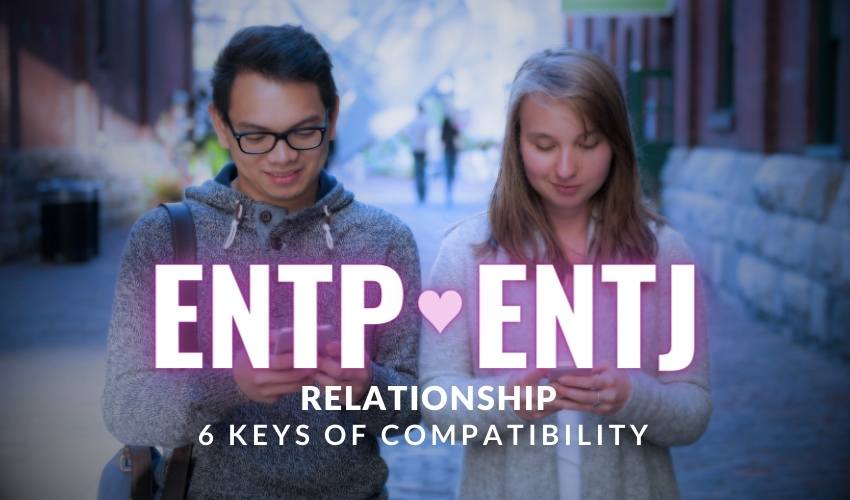Typing other people can be a challenge, especially if you do not know them personally. If you cannot ask someone about their personality, the best you can do is collect clues and make an educated guess. Here is a brief look highlighting some of the characteristics to help you spot or recognize a person’s Myers-Briggs personality type.
INFJ
You can spot an INFJ by their edgy and sometimes brooding demeanor that is interspersed with flashes of light-heartedness and enthusiasm. They are the ones who often act as the moral voice in their group. They seem very insightful and wise and often seek to point out the nice things they observe in other people and make them feel good about themselves. INFJs can often be found in the arts especially that of drama and theater. They are likely to be a bit of a klutz and accident-prone thanks to their inferior Se. INFJs are often polite and careful not to offend other people although they themselves may get their feelings hurt more frequently than they care to count.
INFP
You can probably spot an INFP by their ephemeral and otherworldly aura. From afar, they are likely to appear arrogant, self-centered and artsy-fartsy. INFPs tend to be reserved, preferring not to draw too much attention to themselves and instead spend much of their time observing and daydreaming. INFPs may often be found drawing, writing or doing some other solipsistic activity that doesn’t require interaction with people. Once they become more comfortable around people, they are likely to smile a lot and become cheeky and playful. They are remarkably kind to others especially animals and plants.
INTP
You can spot an INTP by their lack of direct eye contact and social awkwardness. While speaking, INTPs tend to look off in space because eye contact can interfere with their concentration. Their demeanor is quiet and calm and they tend to be polite and respectful. They do not draw attention to themselves in public but when put on the spot, they may say or do things that are surprisingly funny or witty. They like to explain things. They don’t talk much but they will explain the hell out of anything they know or understand well.
INTJ
Unlike INTPs, INTJs are more inclined to make direct eye contact and their gaze is often penetrating. When lost in thought or listening to someone intently they may appear very pensive and focused. They look serious most of the time and their sense of humor often errs toward the dark, deadpan and sarcastic. INTJs are often good with wordplay and may be a pro with puns. They speak in a forthright manner and dress respectably and will unlikely be caught looking like a slouch. They spend a lot of time by themselves reading, writing or working on their craft. You can probably find many of them in a library or bookstore and academically they are often among the most studious and highest performing students.
ENFJ
You can spot an ENFJ from their positive attitude and theatrical charm. ENFJs seem to want nothing more than to uplift people and be a powerful force of good in the world. They can seem too nice for their own good as though they are trying to maximize their likability index with as many people as possible. ENFJs try to be funny and they love telling stories. They are the types of people who seek to unite others and focus on the positive and not the negative. They are enthusiastic and friendly and are both inspirational teachers and humble students.
ENFP
You can spot an ENFP by their flirty tendencies, popularity and sense of moral integrity. They exude a good-natured, good-humored energy that attracts people to them. They are also very understanding and tolerant but candid as well. They are often chatty and loquacious, but not glib and will actually to take the time to make people feel listened to rather than just wait for their turn to speak. ENFPs are very open minded and may be found interacting with all types of people with whom they may have little in common.
ENTJ
ENTJs are take charge kind of people much like the ESTJ. However, unlike ESTJs, ENTJs are more inclined to make intuitive leaps that allow them to deviate from the beaten path ESTJ operates from. ENTJs are energetic, forceful and ambitious and can often be found in entrepreneurial or high profile occupations that few people are able to reach. They are the people who seem to never give up and always find a way to do what seems impossible to others. They are likely to be a bit egotistical and blunt but also frank. ENTJs have a very independent, confident and positive mindset and are great and compelling communicators.
ENTP
ENTPs like to talk and you can spot them being opinionated and humorous in a slightly attention seeking way. They try to be witty and are inclined to utter a lot of random sounding weird things just to see if it sticks or get a reaction. They get bored easily and so many ENTPs will appear restless or ill at ease even when they’re relaxing. They are the person in a group who spitballs the most ideas per minute. Most of them may be no good but often hilarious. ENTPs can also be annoying and egotistical and they always seem to have an answer or snappy response which often earns them the reputation of being a smart-ass.
ISFJ
ISFJs are often soft spoken and humble and make for deeply sympathetic listeners. They talk about their personal experiences as opposed to anything theoretical or abstract. ISFJs are often found working behind the scenes in compassionate careers of service such as health care providers, nursing, therapists, veterinarians etc. They are very considerate and thoughtful and will often remember details about people like their birthday and generously share food and materials or provide a helping hand or spare some time to assist others. They err on the conservative side but are very kind and loving and try to nurture the people they love.
ISTJ
ISTJs carry themselves in a serious manner but may not be as much of a stiff as they appear. They follow the rules and they are punctual and responsible. They don’t like to talk for the sake of talking, but when they do, they take pride in showing off their knowledge wherever possible. They like to discuss plans and logistics and facts as opposed to gossip or personal details about people’s lives. They seem well put together and you can count on them to deliver on their commitments. They are routine oriented and need to feel busy and preoccupied with being productive or they will feel lost and purposeless. They are typically polite and well behaved.
ESFJ
ESFJs are common. You can spot them almost anywhere most likely accompanied by someone because they don’t like being alone. They can be found doing volunteer work or participating at social functions and sporting events. They often take up the role of a social contributor and generously devote their time and energy to making sure others are happy. ESFJs are often very talkative and cheerful. They tend to honor tradition and will try to keep up appearances and take a leadership role at church affairs and community based activities. A lot of gossipy people are likely to be ESFJ and you can probably find them at the water cooler discussing the latest juicy details of people’s lives.
ESTJ
ESTJs are task oriented and you can find many of them in leadership roles managing people or heading over projects. They are likely to be coaches, superintendents and ministers among other things. They master the rules and they know the best way to get things done. ESTJs come off as confident and competent, they command respect but can also be a little pushy and imperious at times. They tend to be highly conscientious individuals who strive to be punctual, professional and respectable. They’re traditional and pragmatic and tend to be highly respected figures within their community.
ISTP
ISTPs tend to procrastinate with routine tasks they don’t like but respond immediately to new or spontaneous ones that they consider interesting, challenging or important. They don’t draw much attention to themselves and are happy to work behind the scenes immersing themselves in the mental exercise of their skill craft. ISTPs tend to be very private and you may find them doing a lot of things by themselves like taking late night strolls or hiking in the woods on their own. They don’t talk a lot about their personal business and prefer instead to connect with others through shared activities. You can spot many of them by their craftsmanship and hand skills and their ability to find solutions to tricky tactile problems.
ISFP
You can spot an ISFP by the quiet demeanor that cause them to tend to themselves most of the time but voluntarily steps in to help with caring and compassion just when it is needed. They are often found doing independent non-team sports like tennis or dance or artistic activities like acting and music. They are kind and sensitive introverts although they may appear a bit aloof and unapproachable. They are rarely assertive or forceful and they exhibit a fine sense of taste for color and texture. They tend to let their art do the speaking and they are able to make bold statements with their creations that words could not do justice.
ESTP
You can spot an ESTP by their alert and assertive disposition. They are candid and don’t beat around the bush in the way they communicate. They tend to say what they think without considering the repercussions or consequences through first. ESTPs tend to be confident and they put themselves out their and may seem foolhardy and impulsive at times. They often put themselves in unnecessary danger as though they are just compelled to push the limits and outdo themselves. ESTPs are often highly competitive adrenaline junkies but are also open minded and compassionate as well. ESTPs are glory-seekers and you can find them doing flashy and adventurous things for attention.
ESFP
ESFPs are like ESFJs but more exciting and dramatic. They care about others welfare and try to see to it that others are having fun and enjoying themselves. They can be seen in the role of host or hostess and are often boisterous and amusing entertainers. They are great at going with their instincts and being spontaneously witty and performing on the spot. ESFPs are the life of the party and super friendly to just about everyone. They radiate good cheer and they like to keep the atmosphere light and mirthful and are reluctant to get too serious or talk about depressing or sad things. You can spot ESFPs all gussied up in bold, bright and fashionable clothing as they always know how to make an impression with style.
Want to know your astrology placements? You can generate your astrology chart here with our free birth chart generator tool.
related posts:
- Which MBTI type is Jordan B. Peterson?
- Which MBTI Type Is Most Likely To Cheat?
- Which Myers Briggs Type Is Most Likely To Be A Serial Killer?
- What Each MBTI Type Does When They Have A Crush
- How To Get Each Myers-Briggs Type To Love You
- Why Each Myers-Briggs Type Is Dangerous
- Why Each Myers-Briggs Type Likely Quit Their Job
- https://infjblog.com/socionics-infj-personality-type-description/
- https://marissabaker.wordpress.com/2018/01/22/the-importance-of-living-authentically-as-an-infj/
- American Presidents Ranked By Zodiac Sign - January 20, 2025
- ESTP and ESFP in love: 6 Dynamics of Their Relationship - September 4, 2024
- ISFP and ISTP in love: 5 Dynamics of their Relationship. - August 28, 2024






Remarkably kind to plants? (INFP) What does that even mean? I like plants but I usually can’t keep them alive. And while I know they are living things, and may even talk to them at times, I don’t ACTUALLY think they have feelings and are in need of “remarkable kindness”. ?And while I do love animals, people are more important (not sure my ISTP hubby would agree). Other than that, very accurate.